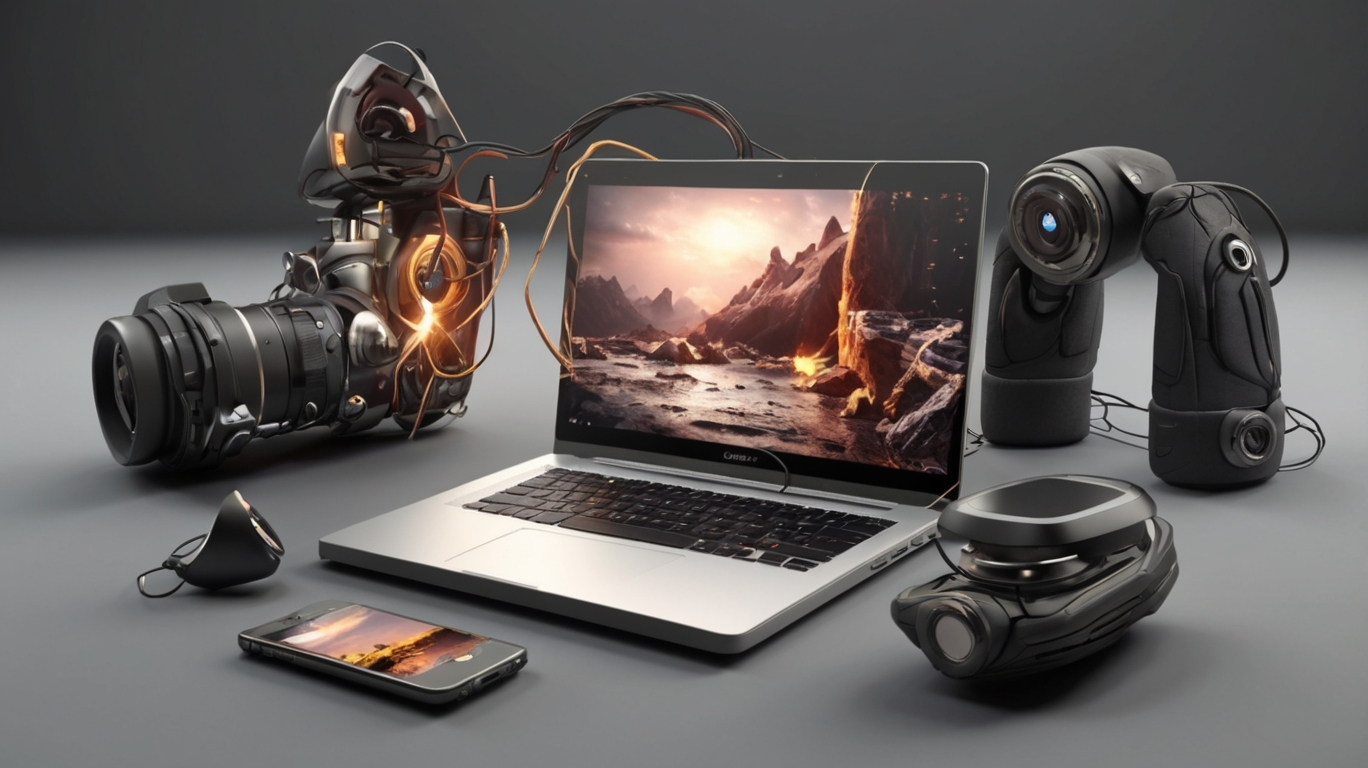The Best Gadgets and Technological:
Technology has always been a mirror of our collective imagination—constantly evolving, adapting, and transforming the way we live, work, and connect with each other. And if there’s one thing 2025 has made clear, it’s that we’re living in a time of exhilarating acceleration. From AI-infused devices to eco-conscious solutions and immersive digital experiences, this year’s tech innovations are not only groundbreaking but also surprisingly human-centric.
Let’s take a tour of the most impressive and talked-about gadgets and tech innovations that have made 2025 a landmark year in the world of consumer technology.
1. AI Everywhere: The Rise of Ambient Intelligence
One of the most defining trends of 2025 is the seamless integration of artificial intelligence into everyday objects. Gone are the days when AI lived only in your phone or computer. Now, it’s practically everywhere—embedded in your home, your car, and even your kitchen appliances.
Take the NeuraHome AI Hub, for example. This smart assistant doesn’t just respond to commands—it anticipates needs. By learning your daily patterns, it preheats your coffee machine before you even leave bed, dims the lights when you’re winding down, and suggests meals based on your dietary preferences and what’s already in your fridge. It’s like having a personal butler with a genius IQ.
2. Smart Glasses That Finally Make Sense
We’ve seen attempts at smart glasses in the past, but 2025 is the year they finally became wearable, functional, and actually desirable. The Visionix XR Specs are sleek, lightweight, and pack some serious tech under the hood. Equipped with real-time language translation, live navigation overlays, and AR-enhanced productivity tools, these glasses are revolutionizing how people interact with the digital world without pulling out their phones.
Whether you’re traveling abroad, attending a remote business meeting, or trying to fix a leaky faucet, these glasses provide a seamless layer of digital assistance that feels straight out of science fiction.

3. Foldable and Rollable Devices Go Mainstream
Flexible displays are no longer niche. Thanks to major breakthroughs in materials science, foldable and rollable smartphones, tablets, and even laptops are dominating the market in 2025.
One standout is the Samsung FlexBook Ultra, a device that transforms from a phone into a tablet and then into a laptop-sized screen with a smooth, uninterrupted surface. It’s perfect for professionals on the go, students, and creatives who need versatility in a single device.
Couple that with LG’s RollMate TV, which rolls up like a yoga mat when not in use, and you’ve got a home entertainment system that’s both futuristic and space-saving.
4. Wearable Health Tech That Could Save Lives
In 2025, wearable health gadgets are smarter, more accurate, and incredibly proactive. Forget basic step counters—today’s wearables are mini medical labs on your wrist.
Take the BioBand X, for instance. This advanced health tracker doesn’t just monitor your heart rate and sleep—it detects early signs of cardiovascular issues, tracks hydration levels, and even offers real-time blood glucose readings without a needle. It uses advanced bio-sensing nanotech to keep tabs on your vitals and warn you (and your doctor) if something’s off.
It’s not just about fitness anymore—it’s about preventative care, early diagnosis, and empowering people to live longer, healthier lives.
5. Eco-Tech: Sustainability Meets Innovation
One of the most refreshing shifts in 2025 tech is the industry-wide push toward sustainability. Gadgets are no longer just smart—they’re responsible.
Leading the charge is the EcoCharge Solar Backpack, which allows users to charge devices using built-in solar panels. Made from 100% recycled materials, it’s perfect for travelers, students, and remote workers who need power on the move without guilt.
Meanwhile, tech giants like Apple and Google have launched modular devices that are easier to repair and upgrade, extending product life cycles and reducing e-waste. Even packaging is getting smarter—biodegradable, reusable, and often embedded with QR codes that offer instructions without the need for printed manuals.
6. Immersive Entertainment: The New Reality
2025 has officially blurred the line between reality and digital fantasy. Thanks to hyper-realistic VR and AR systems, entertainment has become more immersive, interactive, and emotionally engaging than ever.
The MetaVerse Beam XR Pod is a perfect example. It’s a compact, all-in-one VR/AR system that transports users to fully interactive worlds—be it for gaming, concerts, therapy, or even virtual vacations. The spatial audio, realistic haptics, and AI-generated environments make it hard to tell where the real world ends and the digital one begins.
For those less into headsets, holographic displays have made significant strides. Companies like Holowave are now offering 3D display tablets that project images into the air, allowing users to interact with them using hand gestures—no goggles needed.
7. AI-Powered Personal Robots
Remember when having a robot butler seemed like a Jetsons-era dream? In 2025, it’s becoming a reality. Personal robots like MiraBot are making their way into homes as friendly assistants who help with cooking, cleaning, tutoring kids, and even offering emotional companionship.
What sets MiraBot apart is its ability to adapt to your lifestyle. It learns, evolves, and communicates with a degree of emotional intelligence, creating a surprisingly warm and human-like bond with users. It’s not perfect, but it’s a huge step toward truly helpful domestic robotics.
8. Smarter Transportation
Electric vehicles (EVs) have been improving for years, but 2025 marks a tipping point. Not only are EVs now more affordable, but autonomous features have become dramatically safer and smarter.
The Tesla Model V leads the pack with its Level 4 autonomy, meaning it can handle most driving situations without human intervention. Paired with an in-cabin AI assistant that adjusts the cabin climate, playlists, and seating based on mood and voice tone, it’s more like a smart living room on wheels.
And for urban commuters, electric scooters and bikes have gotten a serious upgrade. The AirRider E-Scooter, for instance, uses AI to analyze traffic in real-time, suggest safer routes, and even notify riders about upcoming road hazards.
9. Next-Gen Audio: Spatial Sound and Brain-Controlled Music
The way we experience sound has shifted dramatically. In 2025, audio tech isn’t just about noise cancellation and clarity—it’s about depth, personalization, and even thought control.
The Auralink Mindbuds are a mind-blowing pair of earbuds that can detect brainwaves to adjust your playlist based on your mood. Feeling tense? They might switch you to a calming lo-fi track. Ready to work out? Expect an energizing beat to kick in. It’s like your brain is the DJ.
Then there’s the SonoSpace Orb, a home speaker that uses spatial sound to create immersive 360-degree audio environments. Whether you’re meditating, watching a movie, or hosting a party, it feels like sound is flowing through the walls.
10. Quantum and Edge Computing at Your Fingertips
While still in their early days, quantum and edge computing are making waves in 2025, particularly for developers and power users. These once-esoteric technologies are becoming accessible, thanks to consumer-level devices like the QubeX Quantum Nano.
This portable computing device allows on-the-go processing of huge datasets, complex algorithms, and AI models—right from your desk or backpack. For researchers, coders, and creators, this is a dream tool that accelerates productivity and creativity.
Paired with ultra-fast 6G connectivity, the edge computing revolution means that your devices no longer have to rely on centralized servers. Processing is faster, data is more secure, and user experiences are more fluid than ever.
The Human Side of 2025’s Tech Boom
What makes 2025’s innovations so special isn’t just the raw power or cool factor—it’s how deeply personal and user-centric everything has become. Tech has finally shifted from being a distant, cold tool to becoming a warm, intuitive extension of ourselves.
These devices don’t just solve problems—they anticipate them. They adapt, evolve, and even empathize in ways that make our daily lives richer and more meaningful. Whether it’s a smartwatch alerting you to stress, or glasses helping you navigate a foreign country with ease, the best tech of 2025 reminds us that innovation is most powerful when it’s human-focused.
Looking Ahead
As we move into the second half of the decade, one thing is clear: the pace of innovation shows no signs of slowing down. With advancements in AI, biotechnology, renewable energy, and quantum computing on the horizon, 2025 might just be the beginning of a technological renaissance.
But what will matter most is not just what we invent, but how we use it. In a world brimming with possibilities, the true magic of technology lies in its ability to connect, empower, and elevate the human experience.
And if the gadgets of 2025 are any indication, the future is not just smart—it’s beautifully, brilliantly human.
The Best Gadgets and Technological:
FAQ – The Best Gadgets and Technological Innovations of 2025
1. What are the top tech trends of 2025?
The top tech trends of 2025 include widespread AI integration (ambient intelligence), foldable and rollable devices, wearable health tech, immersive AR/VR experiences, sustainable eco-tech gadgets, and quantum/edge computing becoming more accessible.
2. Which gadget best represents AI innovation in 2025?
The NeuraHome AI Hub stands out as a leader in ambient intelligence. It learns from your habits, automates your environment, and offers proactive suggestions tailored to your lifestyle.
3. Are smart glasses finally practical in 2025?
Yes. The Visionix XR Specs are lightweight, stylish, and offer real-time translation, AR overlays for navigation, and productivity tools—making them both functional and fashionable for daily use.
4. What’s new in wearable health technology?
The BioBand X takes health tracking to the next level. It monitors heart rate, sleep, hydration, and even provides non-invasive blood glucose readings, aiming for early disease detection and preventive care.
5. Are there any eco-friendly tech gadgets in 2025?
Absolutely. The EcoCharge Solar Backpack is a great example—it charges devices with solar energy and is made from recycled materials. Additionally, companies are embracing modular, repairable, and sustainably packaged gadgets.
6. How is entertainment changing with new tech?
Immersive experiences are on the rise with devices like the MetaVerse Beam XR Pod, which blends VR and AR into lifelike environments. Holographic displays are also becoming common for interactive, headset-free entertainment.
7. Are personal robots available in homes now?
Yes. Robots like MiraBot are entering households as assistants for chores, tutoring, and emotional support. They use AI to learn and adapt to your routines and needs.
8. What’s the latest in smart transportation?
EVs like the Tesla Model V now feature advanced autonomous driving and AI assistants. Electric scooters and bikes, such as the AirRider E-Scooter, offer real-time traffic analysis and hazard alerts.
9. How has audio technology evolved?
The Auralink Mindbuds adapt music to your mood using brainwave detection. Meanwhile, the SonoSpace Orb delivers immersive 360° spatial audio for home environments.
10. Can everyday users access quantum computing now?
Yes, through devices like the QubeX Quantum Nano, which brings quantum and edge computing to power users, researchers, and creatives—enabling high-speed processing and AI development on the go.
11. What makes 2025’s technology different from previous years?
The biggest shift is toward human-centered innovation. Devices are now more intuitive, emotionally intelligent, sustainable, and focused on enhancing everyday life in meaningful ways.
12. How do these gadgets impact daily life?
These gadgets aim to reduce friction, anticipate needs, improve health, enhance productivity, and make digital interaction more seamless and immersive—transforming both work and leisure.
Read also :




